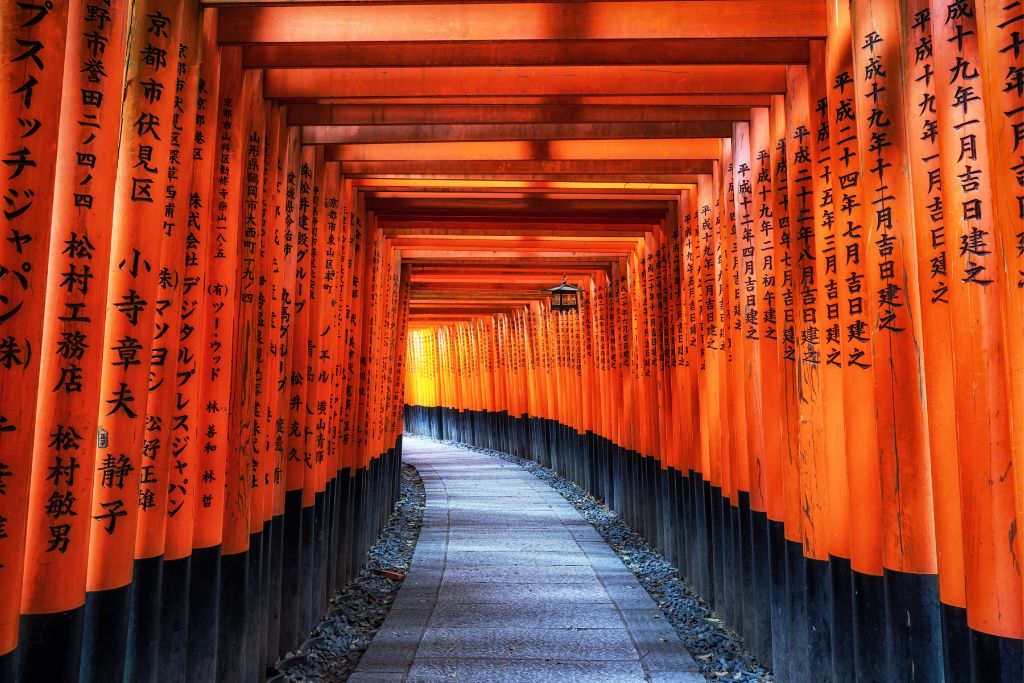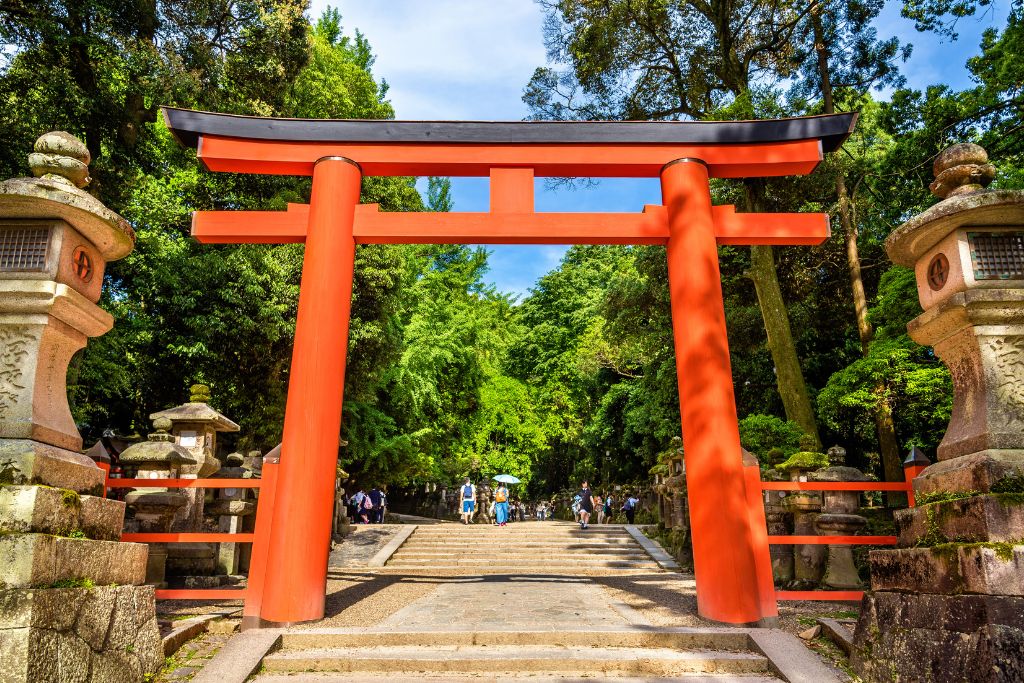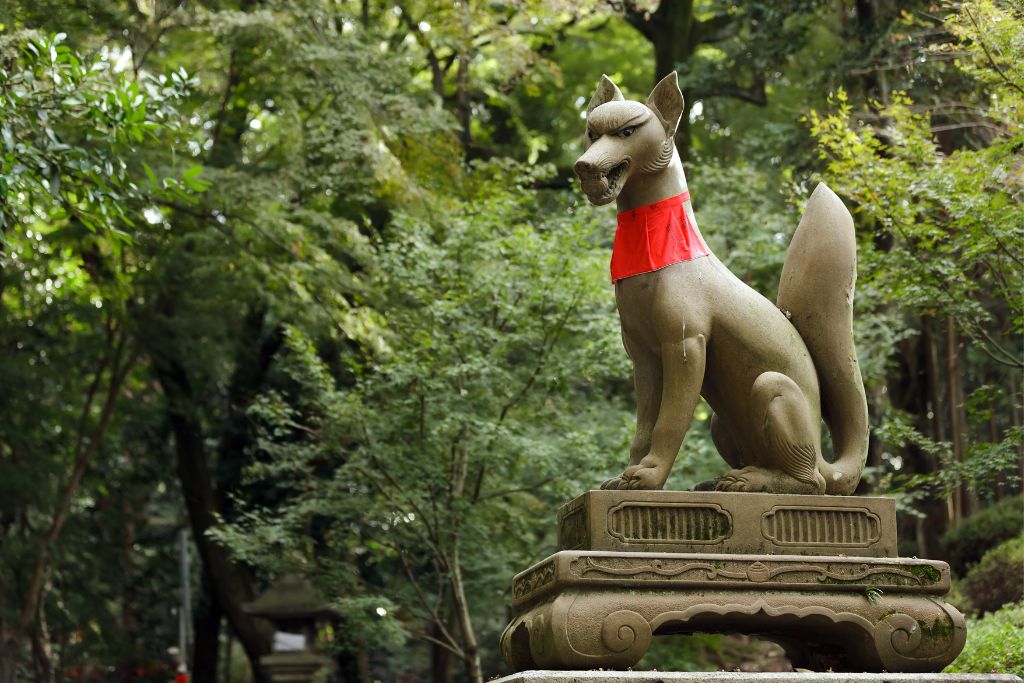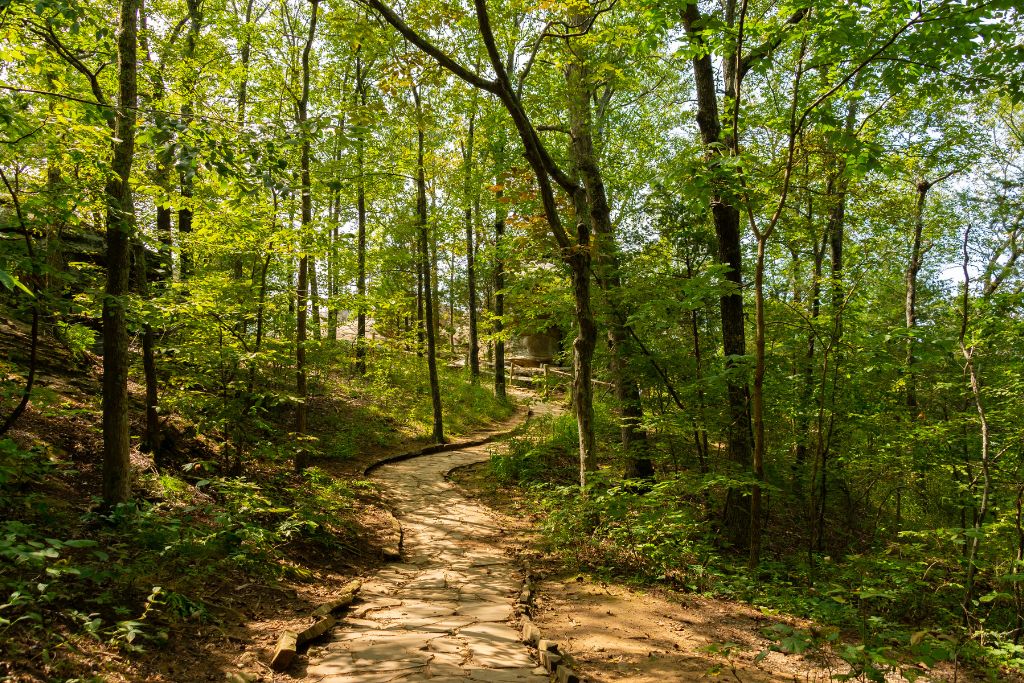Kyoto’s Fushimi Inari Shrine is one of Japan’s most famous landmarks. It’s best to visit at least first thing in the morning or after sunset to avoid the crowds. Kyoto’s Fushimi Inari Shrine is one of the most famous shrines in Japan. It was built in the 6th century AD and is dedicated to the goddess Inari, who is best known for her role as the protector of forests. The shrine has a number of beautiful gardens and an orchard that contains over 200 cherry trees. Thousands of vermilion torii gates line a trail that leads from the shrine up to the summit of sacred Mount Inari, a 233-meter-high mountain. The hike takes around two hours.
Thousands of Torii Gates
Kyoto’s Fushimi Inari Shrine is home to thousands of Torii Gates, a popular symbol of Shinto shrines. The torii gates line the entire walkway of the Fushimi Inari shrine grounds, creating a stunning canopy as visitors make their way through.
Visiting Japan’s shrines is a great way to connect with its culture and spiritual beliefs. One of the most iconic locations is Kyoto’s Fushimi Inari Shrine, which is home to more than 5,000 Torii gates.

The torii gates are donated by individuals or businesses, and the name of the benefactor and the date of their donation is inscribed on the back of each gate. The cost of a small gate starts at around 400,000 yen, but the largest gates can cost up to 1 million yen.
The trail of torii gates winds behind the outer shrine, making it a popular place for locals and tourists alike to visit. It takes about two hours to walk the entire trail.
Shrine Buildings
Kyoto’s Fushimi Inari Shrine is one of the most important shrines in Japan. Founded in 711, it is located at the foot of Mount Inari.
Thousands of vermillion-coloured torii gates line up one after the other along a trail that leads to the main temple and 4 kilometres of sub-shrines spanning 233 meters above sea level. Each torii gate is dedicated to Inari, the kami (god) of rice, prosperity and business.

Each torii gate has been donated by an individual or a Japanese company in the hope that Inari will grant their wishes. These donations are a type of honour or the dedication of something of value to a deity in a shrine or temple.
Visitors can visit the shrine anytime, but it is best to come early in the morning or late at night since the crowds will be much less. During these times, the hike to the mountain top is more calming and relaxing.
Fox Statues
Kyoto’s Fushimi Inari Shrine is one of the most famous shrines in Japan, and it’s easy to see why! It’s a picturesque temple with thousands of red torii gates, and the trails behind the buildings lead up to Mount Inari.
These trails are not for the faint of heart, but they’re a great way to explore the area and take in the amazing scenery. The hike is around 5 kilometres long, and it involves a little bit of stair climbing, but once you get to the top you’ll be treated to an incredible view across all of southern Kyoto.

You’ll find fox statues all over the temple grounds, and they’re believed to be messengers of Inari, one of the temple’s resident deities. These foxes often have a key in their mouths, which represents the keys to Inari’s rice storehouse in ancient times. They may also have more than one tail, which is a sign of wiseness and power.
Hiking Trails
There are many hiking trails at Fushimi Inari Shrine. You can hike up to the top of the mountain and see the thousands of torii gates in a row, walk up forest trails and see smaller shrines along the way or just sit back, relax and enjoy the scenery.
If you want to go up the mountain and see the thousands of torii, it’s best to do it early in the day as the trail gets crowded later. It’s also a good idea to time your hike to the Yotsutsuji intersection right before sunset to get an outstanding view over Kyoto.

If you’re looking to avoid the crowds, head on a private tour that takes you off paved paths and onto actual forest trails. This will let you discover hidden bamboo groves, secluded trails that lead to old and hidden altars and the beautiful evergreens around the temple.
No trip to Kyoto is complete without a visit to the iconic Fushimi Inari Shrine. After exploring the stunning torii gates and hiking trails of the shrine, visitors can unwind in one of the city’s beautiful green spaces, such as Maruyama Park. As Kyoto’s most famous park, Maruyama offers visitors a chance to relax and enjoy the natural beauty of the area, with cherry blossoms in the spring, a beautiful pond, and stunning views of the surrounding mountains. So, don’t forget to include a visit to Fushimi Inari Shrine on your Kyoto itinerary..!










No comment